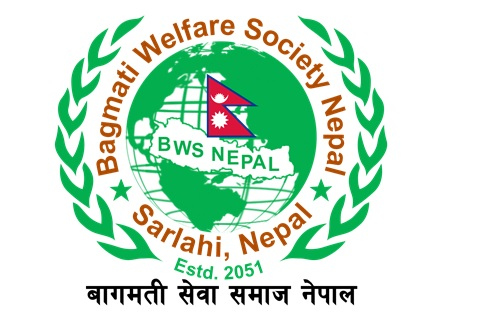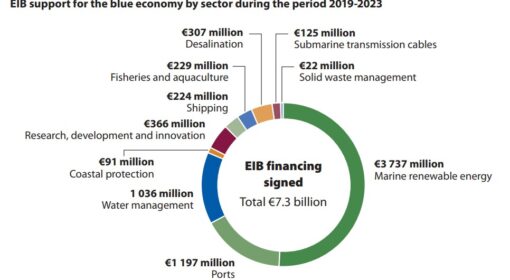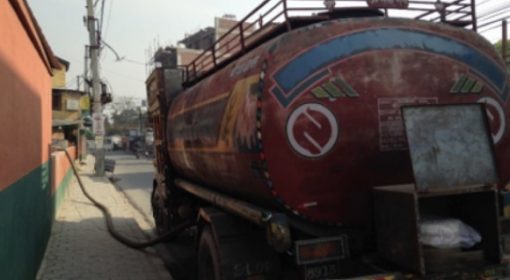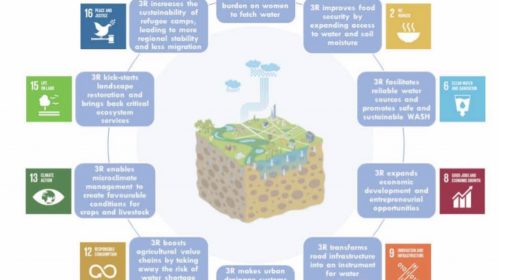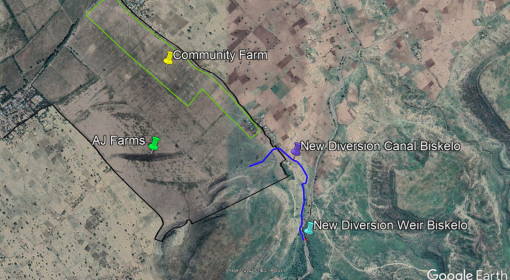by Long Hoang, Rewati Dhakal, Atikah Eria Putri, Saroj Yakami, Lucia Moreno Spiegelberg, Abhishek Bhandari, Sunil Sha
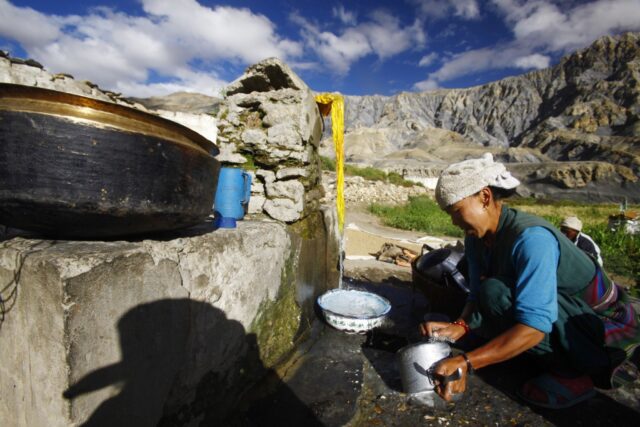
Access to clean and safe drinking water is essential for public health and economic growth. While progress has been made in expanding water supply systems in Nepal, significant challenges remain, particularly in financing these infrastructures at scale. As the country grapples with diverse geography and socioeconomic disparities, addressing the financing gaps in the water sector becomes crucial to ensure every citizen has access to clean water. By reflecting on the current state of the drinking water supply in Nepal and zooming in on the financing gaps, we elaborate on suitable financing mechanisms and concrete project concepts that can drive change.
1. Nepal Needs to Step Up on Drinking Water Supply Systems
Nepal’s complex geography – spanning from the high-altitude Himalayas to the lowland Terai plains – poses unique challenges for water supply infrastructure. Currently, approximately 57.8% of the population in Nepal is using basic water services. This indicates a significant portion of the population still lacks access to reliable and safe water sources (JMP, 2023). Despite abundant water resources, Nepal struggles to ensure reliable, clean water, particularly in remote areas where infrastructure development is costly and difficult. The problem is compounded by contamination in regions like the Terai, where groundwater arsenic pollution is a major issue. Furthermore, the country is highly vulnerable to climate change, with erratic weather patterns, glacial melt, floods, and landslides frequently disrupting water supplies. On another note, the proposed targets for SDG 6 – clean water and sanitation – include basic water supply coverage to 99% of households, piped water supply to 90% of households, and 95% of households with improved sanitation facilities1. Growing water demands and changing environmental conditions call for immediate responses, including increasing the financial flow for investing in long-term, resilient water supply systems.
2.The Financing Gaps for Investing in Drinking Water Supply Systems
Nepal’s water infrastructure is in dire need of investment, yet the financing landscape is fraught with challenges. The government’s funding is insufficient to meet the scale of the problem, particularly in rural and remote areas where development costs are higher due to difficult terrain. Nepal’s latest National Water Plan estimates that about 38% of the required investment in the water sector should come from the private sector, representing a substantial financing gap as the current level of private sector investment is far below this level2. Moreover, local Water User Committees (WUCs), which play a critical role in managing water supply systems, often struggle to generate enough revenue to cover operational and maintenance costs, leading to system failures. The financing challenges are compounded by a lack of incentives for private sector investment, weak regulatory frameworks, and fragmented institutional responsibilities that hinder efficient project implementation.
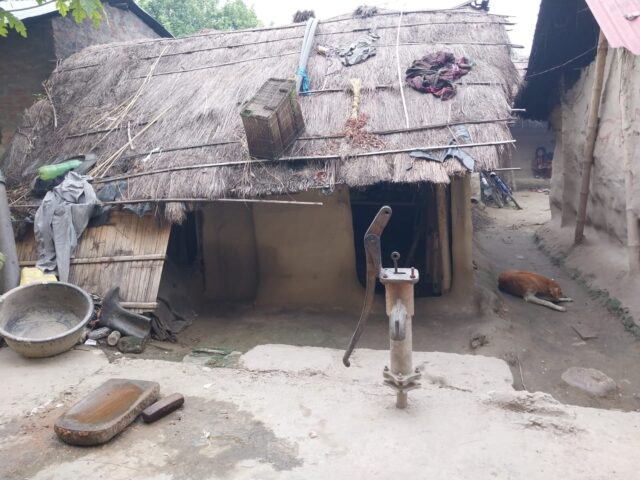
3.Financing Mechanisms for Drinking Water Supply – The Potential and the Barriers
Addressing the financing gaps in Nepal’s drinking water supply systems requires tapping into multiple financing mechanisms, each offering unique potential but facing distinct challenges.
Private Sector Investment: Private sector participation is essential for closing the financing gap. However, private sector investment in water systems remains limited due to the high perceived risks. Water projects often have long payback periods, low immediate returns, and are seen as vulnerable to climate impacts. Additionally, the current regulatory environment in Nepal does not provide enough incentives for private investors to engage in water infrastructure projects. To unlock private sector involvement, there need to be more attractive investment conditions, such as improved tariff structures and guarantees against financial risks. Specific programs and co-funding mechanisms could be useful in drawing private sector companies into investment in the water sector, including in drinking water supply.
Loans and Credit Instruments: Development banks and financial institutions can play a key role by providing loans to finance water infrastructure. These loans can offer long-term financing, crucial for large, capital-intensive projects like water treatment plants or pipeline systems. However, the challenge lies in the repayment capacities of local governments or water user committees (WUCs), which are often constrained by limited revenue streams. Another challenge is the relatively short repayment time requirement from the banks, which makes loans for water infrastructure projects less attractive. Concessional loans with below-market interest rates can be a feasible solution to mitigate this. Additionally, microfinance can help smaller communities or WUCs finance water projects, especially in rural areas.
Public-Private Partnerships (PPPs): PPPs offer a powerful tool for financing water infrastructure by combining public oversight with private sector efficiency. These partnerships allow for shared responsibility and risk between the government and private entities, which can make large-scale water projects more viable. Successful PPPs can help streamline project delivery and ensure systems are maintained in the long run. However, PPPs face barriers in Nepal, such as weak institutional frameworks and insufficient experience in structuring these relatively new and possibly more complex institutional agreements between government authorities and private companies. Strengthening regulatory guidelines and offering incentives, such as tax breaks for private companies, could encourage more PPP initiatives in this regard.
Blended Finance: Blended finance is a growing trend that combines public, private, and donor funds to spread financial risk, increase bankability, and thereby attract more investment. In Nepal, blended finance models could be particularly useful in overcoming the funding challenges that local water user committees face. By integrating different sources of capital, such as government funding, private investment, and international aid, these models reduce the burden on any entity. They also create more resilient financing frameworks by diversifying the risk. Blended finance mechanisms have the potential to make water projects more attractive to private investors while ensuring that public funds are efficiently utilized.
Donor and International Aid: International donors, such as the Asian Development Bank (ADB) and the World Bank, have historically been key players in funding Nepal’s water sector. The banks often provide grants or low-interest loans for water infrastructure development. While donor funding remains critical, it is often project-specific and sometimes not fully aligned with the sector’s long-term sustainability. A more coordinated approach is needed, where donor funding supports broader national water strategies, ensuring that projects are not just one-time interventions but part of a cohesive system.
Community Financing and Microfinance: In rural areas, community-based financing models, including microfinance, can offer a viable solution for financing small-scale water supply systems. By organizing savings and loan groups, communities can pool their resources to invest in infrastructure and maintenance. This approach empowers local users and promotes ownership over water systems. Microfinance institutions can provide affordable loans to water user committees, which can be repaid through water tariffs. This ensures that systems remain functional and well-maintained over time while also fostering financial sustainability at the local level.
In conclusion, Nepal has multiple potential financing mechanisms that, if properly leveraged, could significantly improve the country’s drinking water supply systems. However, each mechanism requires targeted interventions to address the barriers currently hindering full utilization. By integrating private investment, loans, public-private and philanthropic partnerships (PPPs), blended finance, and donor aid, Nepal can move closer to closing the financing gaps and ensuring that every citizen has access to clean drinking water.
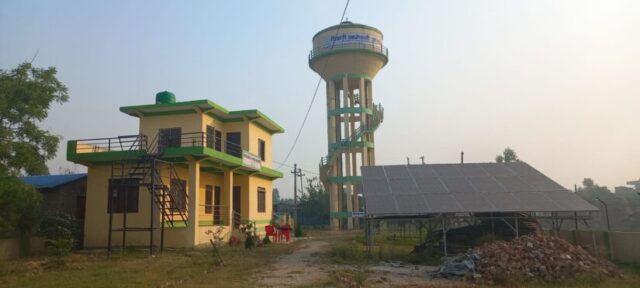
4.Concrete Project Concepts on Drinking Water Supply
To bridge the financing gap and improve drinking water supply systems in Nepal, we present below a selection of suitable project concepts:
- Community-Led Drinking Water Systems: These systems involve local communities in the planning, managing, and maintaining of the drinking water system, for instance, small-scale overhead tanks. By promoting ownership and responsibility, these systems are more likely to be sustainable. For example, Bagmati Welfare Society Nepal (BWSN) has implemented projects focusing on community participation and local governance to ensure the long-term viability of this kind of drinking water supply system.
- Urban Water Treatment Plants: These large-scale projects aim to supply clean drinking water to urban populations, where demand is higher and water quality issues like contamination are more prevalent. Urban water treatment plants purify large volumes of water for residential, commercial, and industrial use, ensuring that cities have a consistent, safe water supply. They often require advanced filtration and treatment technologies and significant capital investment, making them suitable for private sector involvement and large loans.
- Rural Water Storage Systems: These systems focus on collecting and storing water in rural areas, where access to clean water is often limited due to geographical challenges. Projects like gravity-fed storage tanks, reservoirs, or community water storage facilities help ensure a continuous water supply, particularly in areas that rely on seasonal rain or glacial melt. These systems are essential for irrigation, drinking water, and livestock, especially in isolated regions.
- Small-Scale Water Conservation Projects: These projects are aimed at preserving water resources at a local level, often through sustainable practices like reforestation, watershed management, or community water-saving initiatives. Water conservation projects typically involve smaller investments but have a significant impact on maintaining water availability, especially in water-scarce regions. The focus is on reducing water waste and protecting natural water sources.
- Rainwater Harvesting Projects: These systems capture and store rainwater for later use, providing a supplementary or alternative water source in areas where traditional water supply systems are inadequate or unreliable. Rainwater harvesting is particularly valuable in rural or semi-urban areas with limited access to clean water. These projects are relatively low-cost and environmentally friendly, making them suitable for small communities or individual households looking to reduce dependency on external water sources.
Owing to their different objectives, each of the above project concepts features various suitability levels regarding the financing mechanisms. The table below qualitatively indicates the suitable financing mechanism for the concepts.
Private sector investment for rainwater harvesting projects is not for urban and commercial properties and is not widely practiced. Future: Expanding private investment into industrial applications for non-potable water use.
Table 1. Current and future opportunities for Private Sector Investment
Rainwater Harvesting | Community-Led Drinking Water Systems | Urban Water Treatment Plants | Rural Water Storage Systems | Small-Scale Water Conservation Projects | ||
| Current | Private sector investment in rainwater harvesting for urban and commercial properties is not widely practiced. |
| Private companies participating in the construction and operation of urban water schemes | Almost none. | Community-level programs supporting small-scale water conservation projects in rural communities. | |
| Future | Private companies involved in construction, real estate, hotels, hospitality and tourism, beverages, agriculture-based businesses, and water infrastructure development will likely recognize the growing demand for sustainable water supply systems.̽ |
| Investments in advanced water treatment technologies, including wastewater recycling. | Partnerships with agribusinesses to expand water storage systems to improve agricultural productivity. | Private sector investment in water conservation technologies, including solar-powered irrigation and water lifting. |
̽The government’s 15th Five-Year Plan and various water policies encourage sustainable water management, including rainwater harvesting, as a priority to deal with water shortages. This creates an enabling environment for private investments. However, it does not seem viable in the immediate future to cover the funding gap.
Table 2. Current and future opportunities for Loans/Credits and Public-Private Partnerships
Rainwater Harvesting Projects | Community-Led Drinking Water Systems | Urban Water Treatment Plants | Rural Water Storage Systems | Small-Scale Water Conservation Projects | ||
Opportunities for Loans/Credits | Current | Microfinance and development bank loans for households and commercial entities adopting rainwater systems are almost non-existent | Mutualization of local government’s resources. | None. | Agricultural loans for agri-based water schemes for farms for irrigation | Microloans are used by small-scale farmers for water and irrigation. . |
| Future | Government-backed loans and incentives for rainwater harvesting infrastructure in urban and rural areas. | Low-interest loans and grants from development banks for sustainable community water projects. | Municipal bonds will finance the expansion of water treatment facilities. | Rural development loans for collective water storage projects. | Credit facilities to support the large-scale implementation of water conservation technologies | |
Opportunities of Public-Private Partnerships | Current | Municipal partnerships with I/NGOs for rainwater harvesting infrastructure. | Partnerships with local governments and international donors to construct and manage community water systems. | None. | Partnerships between local governments and I/NGOs for rural water storage infrastructure. | No PPPs but joint initiatives of local government and international donors. |
| Future | Expanding PPPs to rural areas, integrating rainwater harvesting with broader water management systems. | PPPs for expanding community-led water systems to peri-urban and rural areas. | Expanding PPPs to include advanced water treatment and recycling technologies. | PPPs focused on improving agricultural water and drinking water systems through efficient water storage. | Expansion of PPPs for sustainable water management and conservation technologies. |
Table 3. Current and Future opportunities for Blended finances, Donor funding and Community financing
Rainwater Harvesting Projects | Community-Led Drinking Water Systems | Urban Water Treatment Plants | Rural Water Storage Systems | Small-Scale Water Conservation Projects | ||
Opportunities of Blended finance | Current | Government grants to fund rainwater harvesting systems, including donor support. | Government and private sector funds blended to support decentralized drinking water systems.
| Blended finance combining public funds and private sector loans for urban water treatment plants is almost non-existent. | Private investments are non-existent. Public grants and donor community funds are combined to support rural water storage infrastructure. | Blended finance models supporting small-scale water conservation projects with community and public funds. |
| Future | Blended finance models integrating local government support and funds related to climate resilience, WASH, etc., for rainwater projects. | Blending donor funds, government subsidies, and private investment for community-led water projects.
| Green bonds supporting sustainable urban water treatment projects. | Climate finance integrated with private sector funds for sustainable water storage solutions. | Integrating climate adaptation finance with private sector investment for water-saving technologies. | |
Opportunities for Donor Funding | Current | Donor grants supporting rainwater harvesting projects in water-scarce regions. | Donor funding focused on improving access to clean drinking water for marginalized communities.
| Donor funding supporting urban water treatment plants in underserved areas. | Donor funding supporting rural water storage infrastructure to improve agricultural productivity. | Donor grants supporting pilot water conservation projects in rural communities. |
| Future | Donor funding tied to climate resilience and water security initiatives. | Long-term donor funding for sustainable, community-led water systems.
| Ongoing donor support for improving urban water systems in rapidly growing cities. | Donor programs focusing on water security in rural areas impacted by climate change. | Donor funding for scaling successful water conservation practices across regions. | |
Opportunities for Community Financing | Current | Community pooling funds for rainwater harvesting systems. | Community contributions supporting the development of drinking water systems.
| Community financing through user fees supporting urban water treatment systems. | Farmers group cooperatives contributing to developing and managing rural water storage systems. | Community fundraising for small-scale water conservation projects. |
| Future | Local water user committees managing and financing shared rainwater harvesting infrastructure. | Community-managed funds for the maintenance and expansion of drinking water services.
| Municipal financing involving community stakeholders to expand water treatment facilities. | Community-led financing for maintaining and expanding rural water storage infrastructure. | Community-based financing for expanding and maintaining water conservation initiatives. |
5.Conclusion
The need for investment in Nepal’s drinking water supply systems is urgent. While the financing gap remains a major hurdle, innovative approaches such as blended finance models, public-private and philanthropic partnerships, and community-led management can provide sustainable solutions. By aligning financial resources with long-term water infrastructure needs, Nepal can close the financing gap and ensure that all its citizens have access to clean, safe drinking water. Through collective efforts involving the government, private sector, donors, and local communities, Nepal can create a future where safe drinking water is accessible to all, regardless of geography or income.
References
Nepal’s National Water Plan https://lpr.adb.org/resource/national-water-plan-nepal-2002-2027
This blog is put together by

